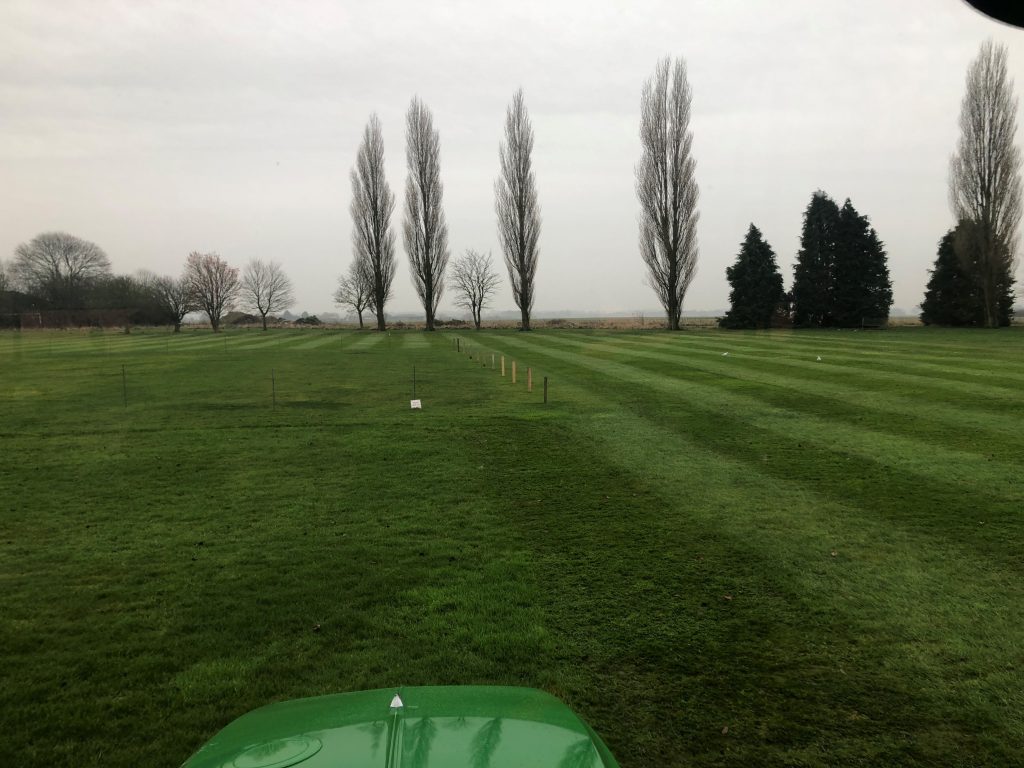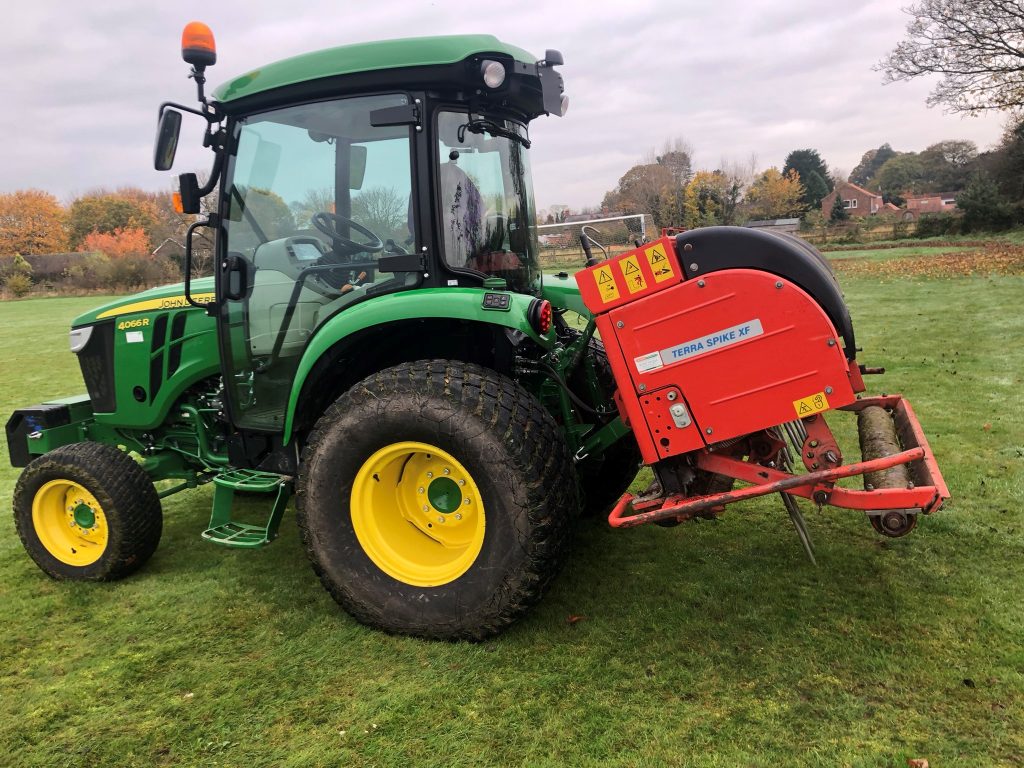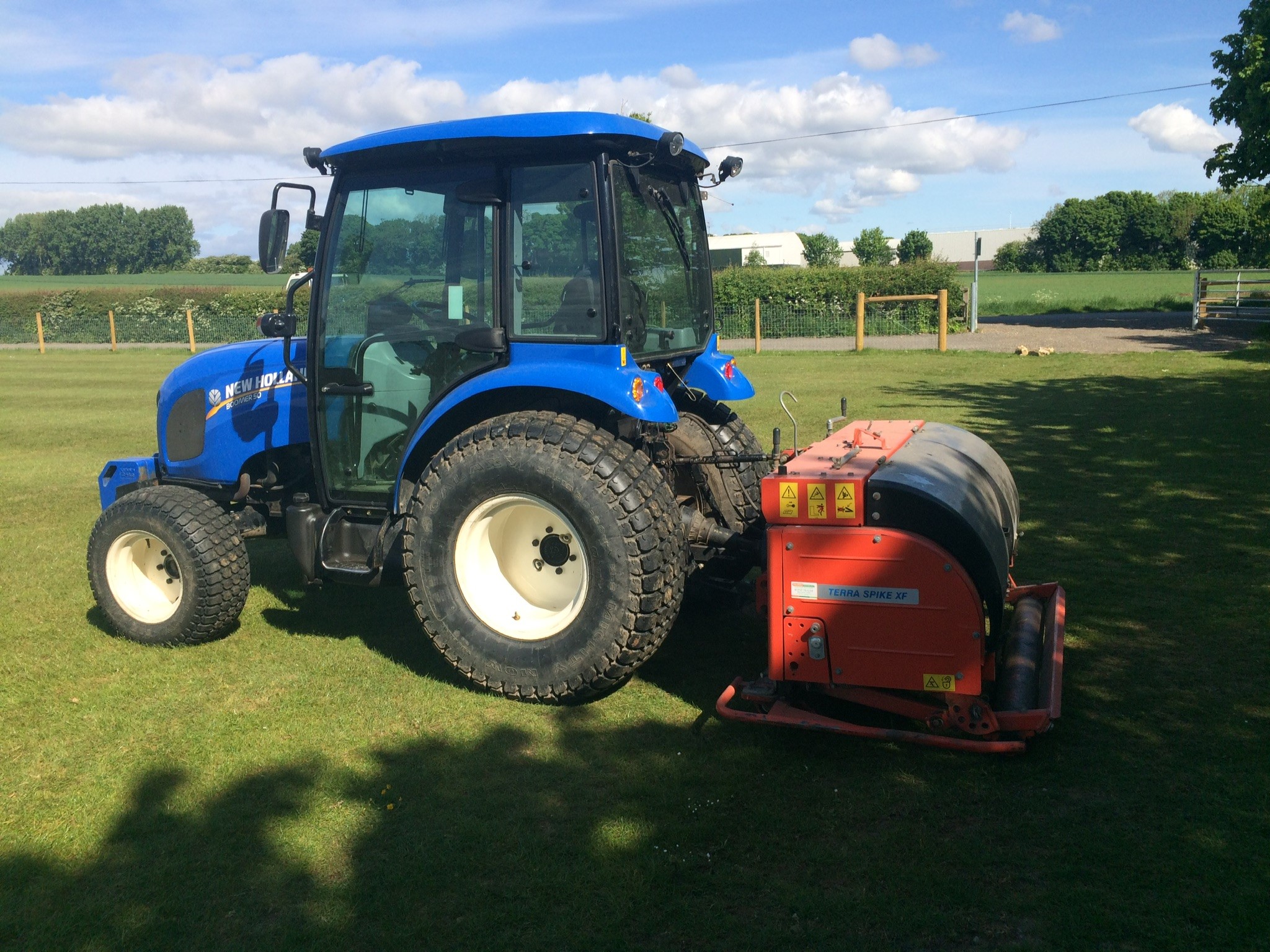Unusually moderate conditions since October have meant sports contractor, Sports Turf Services York has hardly called off a day’s work, excepting Christmas, these past few months.
Director, Simon Race and experienced colleague, Nick Hatfield, operate together and separately across the north, maintaining and refurbishing all types of outdoor sports surfaces for schools, councils, and professional and volunteer clubs.
Cricket has long been an area of expertise for STS York, and this season they have aerated dozens of squares. Aerating a cricket square follows a standard timetable but so much comes down to the conditions on the day.
“It really has to be done between mid-November to December with our machine of choice the Wiedenmann Terra Spike XF6, which is both fast and precise,” explained Nick Hatfield.”
“We try not to deep spike beyond December because you want to give the aeration holes time to close. I always suggest a 10 mm wide tine to a depth of no more than 20 cm.
“Deep aeration is essential as it lets oxygen down to the root system and let’s CO² out, plus helps with drainage. It can help break up layering caused by over rolling that causes lateral root growth and helps the roots go deeper. I’m occasionally asked if there is a chance the holes won’t close by the season start. There’s always a chance with anything you do, but I think it’s more harmful to miss the aeration window. It could be a dry winter and they open more. If it’s looking dry and there’s no chance of frost you might even need to water but aeration keeps your square in good health.”

Nick frequently contributes his advice on industry blogs about turfcare and posts regularly on social media
“You have to be especially careful if you think there is a particularly hard pan such as a chalk layer that may disrupt the tines and then subsequently dent the surface. Even pulling up stones or chalk can disturb the tines. Any lifting of the surface can cause root breaks. In my opinion, using an experienced contractor with the best machine for purpose, in the right conditions is key.
“I often say, an effective way to test soil to see if it is ready, and to check you have no deep pans, is to push a screwdriver into the ground. If it doesn’t pull or stretch the profile when you take it out, it’s ok to go. Also, if you can push the screwdriver in with ease to the optimum depth you want to deep spike, then that’s another good sign.
“Protecting the soil profile is everything. I run the Wiedenmann for five minutes or so on the outfield beforehand. Next, I stop and check the tines are totally clean and shiny before I make any run on the square.
“You don’t want any ‘lifting’ whatsoever. The XF6 is the quickest deep aerator on the market and its tines penetrate the surface and then come back out fast. That ‘in’ and ‘out’ action must be smooth.
It’s important to take the heave off, which is really easy on the XF.
“These are the tiny details that I try to pass on. There are so many variables; no two cricket squares are ever the same, nor are the conditions on the day. With timing, the secret is to be patient. Just because someone has had theirs done a mile away doesn’t mean yours is ready to do. Over time you do find what works best, but it is so important to share knowledge whenever you can,” concluded Nick Hatfield.


